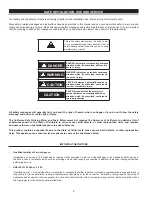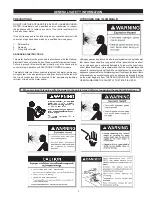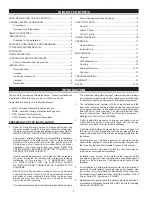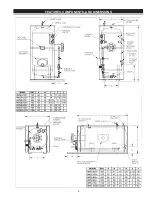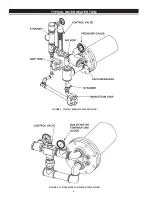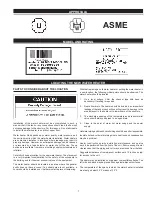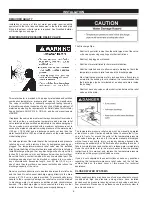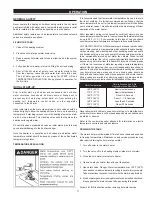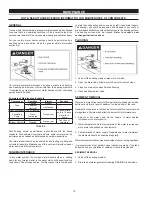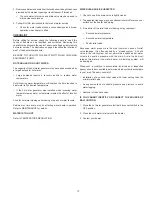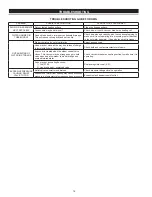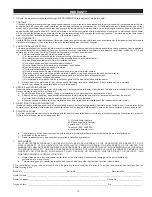
13
3. Remove sediment and scale from the tank bottom through the access
provided by the element opening or tank cleanout, if furnished.
• The cold water inlet valve and drain valve may be opened to
aid the cleanout process.
4. Follow FILLING instructions to restore hot water service.
• Check for water leaks around access openings and proper
operation when heater is filled.
checklIst
Before calling for service, check the following points to see if the
cause of trouble can be identified and corrected. Reviewing this
checklist may eliminate the need of a service call and quickly restore
hot water service. The illustration on page 5 identifies the location of
most of the heater components.
BE SURE TO TURN OFF THE ELECTRICITy WHEN CHECKING
EQUIPMENT (PUMP).
not enouGh or no hot water
The capacity of the hot water generator may have been exceeded by
a large demand for hot water.
• Large demands require a recovery period to restore water
temperature.
Cold incoming water temperature will lengthen the time required to
heat water to the desired temperature.
• If the hot water generator was installed when incoming water
temperature was warm, colder water creates the effect of less hot
water.
Look for hot water wastage and leaking or open hot water faucets.
Sediment or lime scale may be affecting water heater operation.
Refer to MAINTENANCE for details.
water Is too hot
Refer to TEMPERATURE REGULATION.
water leakaGe Is suspected
1. Check to see if the drain valve is tightly closed.
2. The apparent leakage may be condensation which forms on cool
surfaces of the heater and piping.
3. If the outlet of the relief valve is leaking it may represent:
• Excessive water pressure.
• Excessive water temperature.
• Faulty relief valve.
Excessive water pressure is the most common cause of relief
valve leakage. It is often caused by a “closed system”. A check
valve in the inlet system will not permit the expanded hot water
volume to equalize pressure with the main. A relief valve must
release this water or the water heater or plumbing system will
be damaged.
When such a condition is encountered, local codes or inspection
agency should be consulted to determine which system is acceptable
in your area. These my consist of:
• Installation of a second relief valve with lower setting than the
primary relief valve.
• An expansion tank of suitable pressure and provison to avoid
water logging.
• Removal of the check valve.
If you cannot IdentIfy or correct the source of
mAlFuNctIoN:
1. Place the hot water generator electrical disconnect switch in the
OFF position.
2. Close the cold water inlet valve to the heater.
3. Contact your dealer.
Summary of Contents for HWG-140
Page 5: ...5 FEATURES COMPONENTS AND DIMENSIONS...
Page 16: ...16 NOTES...
Page 17: ...17 NOTES...
Page 18: ...18 NOTES...
Page 19: ...19 NOTES...


